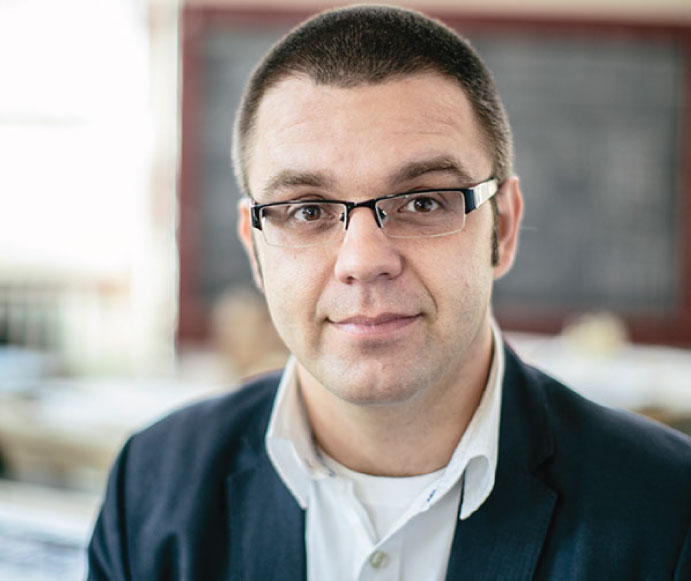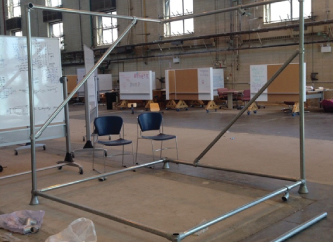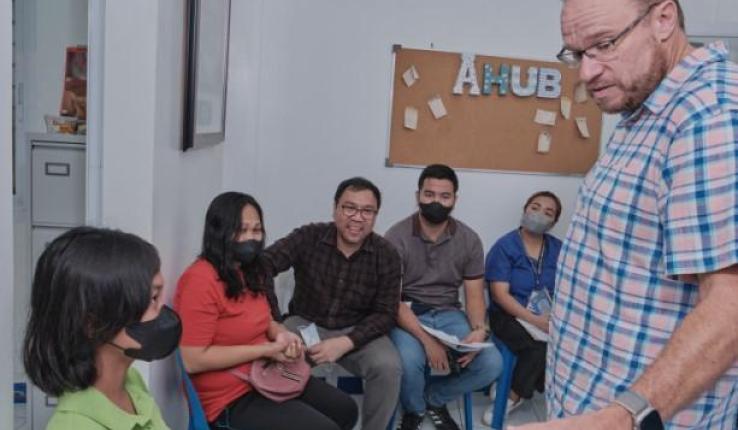Mountaintop Mentor - Nik Nikolov

Nik Nikolov, Mountaintop Mentor in Summer 2014
Nik Nikolov, assistant professor of architecture in the Department of Art, Architecture and Design, partnered up with Wesley Heis, also an assistant professor of architecture here at Lehigh, to mentor a diverse group of students this summer. Nik shared with us some of the reasons he got involved (by accident? luck? good timing?) with the Mountaintop experience and why he believes the opportunity is so unique.
Give us your opinion on Mountaintop & the unique experience it will provide participating students.
I have always observed with curiosity the love affair that Lehigh students harbor with conceptual development — the love for ideas, the thrill of generating something “new,” the total subjectivity through which they view their place in the world. What a luxury! To be afforded the freedom, to put an “I’ in the center of the forest and be allowed to organize the world around it …
Coming myself from a practical profession (architecture), I am continuously surprised how great ideas have the shelf life of bananas. It takes courage to test an intoxicatingly great idea- it takes perseverance and it sometimes takes so much time, you even forget what the whole reason for it was in the first place… Good ideas beat you down. (paraphrasing one of our crew members) This is what attracted me to Mountaintop. Discovery is a process, not an ‘a-ha’ moment. It is a pursuit. A pursuit that is not always possible in the class environment of a regular semester. Here at Mountaintop, we can focus, fail, persevere, take time, keep asking, be mindful.
You know, snipers are taught special breathing techniques that slow the heart rate down. Design is a war of attrition — we train to breathe, aim (high), release.
How did you get involved with this project/these students?
Fellow faculty member Wes Heiss and I did a very successful student/faculty collaboration last year. Together, with undergraduate Architecture/Engineering dual-majors Kathryn Stevens and Julia Klitzke, we designed and built a playhouse after-hours over a couple of months. We called it Imaginarium – a small, kid-size building made in response to the 2013 Annual Playhouse Design Competition organized by the Eastern PA chapter of the American Institute of Architects. The competition promoted design and architecture in the Lehigh Valley and the entries were open to the public to use with the start of Christkindlmarkt, the traditional festival of the season in Bethlehem, PA. In late December, the entries were auctioned to raise funds for the Pediatric Cancer Foundation of the Lehigh Valley. We were interested in expanding the idea of play beyond something that is either learned or unlearned. The resulting design is a mysterious, faceted crystal-like house which resisted the common strategy applied to children-bound creations – to create small versions of big things (princess castle), or big versions of small things (mushroom house).
So when the call for proposals for the Mountaintop experience came up, it all clicked — the space, the philosophy, the freedom … we were ready for the next playhouse. We called it Shapeshifter as it will be transformable and will react to human occupation. It will be large enough for a child to play in and will be designed for outdoor use, utilizing materials that will withstand the elements. Further, it will be transportable and most importantly: it will invite participation.
The idea of play has been widely theorized in every possible meaning and application. From anthropology to engineering, play is fundamental to the acquisition of knowledge while challenging it at the same time. Play, according to Huizinga, “is older than culture.” Please resist imagining jungle gyms or cute stacks of fisher-price cubes!
We have a truly multidisciplinary crew of dedicated students: Liz Phillips (graphic design), Luke Genthe (electrical engineering), Matt Wetzel (civil engineering), Dylan Petruskevicius (mechanical engineering), Michelle Vollmuller (environmental engineering), Tess Flemming (architecture), Ben Gingold (product design). For us, it entails a path both made and found. We describe it as a poetic use of technology in ways mediated by material and time.
So how did we get involved? I don’t know, an accident? It all started with an idea and we’ve been continually playing and testing since.
Posted on:





